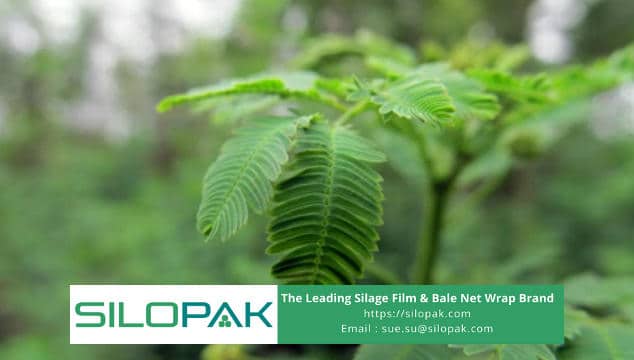
Desmanthus has many species, for example, virgatus and illinoensis. In general, this plant has high potential as a source of animal feed and has the opportunity to be developed as a forage crop, especially in areas of salinity. This plant is also a tropical shrub category and can function as a perennial nitrogen fixer. Did we know that this shrub can be used as green manure? Its functions as a cover crop and animal feed. The valuable thing is how well it adapts, suitable for dry areas and various soil.
contents
Desmanthus and How its Potential as a Legume for Cattle is
It is very important how to look at livestock food supplies so that their needs are always fulfilled. On the other hand, you also need to pay attention to the costs you need to pay to make it grow optimally and productively.
One type of feed that you can choose is Desmanthus. Where this plant is a drought-tolerant legume so it is suitable for planting in various environments even in dry ones, it is a type of legume that is productive, strong, and easily digested by livestock.
Large grazing is also suitable for this plant. At the same time, the scattered seeds will grow into seedlings after the next rain falls. To maintain the productivity of legume plants, one of the keys is to ensure that the seeds are in good condition in the first and second years after planting. This will continue into the next cropping season and form a seed reserve in the soil. It is important to get additional seeds if your seeds fail to grow.
Things that affect the productivity of this legume seed are low rainfall and heavy grazing. You can wait until the second year after the seeds are planted. Why is that? Because the seeds of these plants are hard, they need several periods to soften until they are weathered and grow into new plant sprouts.
The Description of Desmanthus

As we know, this plant is a perennial legume suitable for growing in clay soils of the tropics and subtropics. Historically, it is native to Central and South America, where it thrives in neutral to alkaline soils, even with low rainfall.
One of the advantages of growing it is that it is well suited for use in large grazing areas of both native grass and sown grass. A completely different uniqueness from other types of tropical legumes that are sown on heavy soils.
This type of plant is diverse and widespread throughout the world but very rarely grows in certain areas such as Southeast America. The great thing is that this plant can grow optimally in a variety of different habitats. However, the most common location for plant growth is heterogeneous grasslands.
What about the physical characteristics of this plant? So far, adult plants reach 2 m in height or no more than 1 m in some areas. Generally, these plants have 2 to 6 stems that emerge from shoots below the soil surface. The stems do not gather on one side but spread randomly and the shape is rather loose, there is an open crown.
The leaves are double pinnate compounds, not too big or small with an average size range of about 8 cm and 4.5 cm wide. Its main branches have leaves containing 10-14 secondary divisions, and each secondary branch has 13-31 pairs of smaller leaflets.
These leaves are arranged to give a distinctive hairy impression on all parts of the leaf. The leaves are in pairs, closed from the evening until the next morning. Another special feature is that the leaves are not sensitive to touch or external stimulation. Special features as found in the Mimosa pudica plant.
It has small flowers, usually white, arranged in a round shape. This arrangement is formed from an average of about 50 small flowers with a size of only 1 cm. An erect stem supports this head, measuring 2-5 cm long. If you notice, the stalks are very oblique in cross-section and originate from the axils of the leaves. Each flower has about 5 stamens, located some distance outside the corolla. The flower petals are shaped like a tube and no more than 2 mm long.
The Habitat and Where Desmanthus Can Grow?
Even though it has many benefits, there are still some areas that consider this plant just like a wild plant. This species is more widespread in grasslands. The most preferred habitat for this plant is the open habitat type. So you can just find it growing on the side of the road and other open areas.
The type of soil where this plant grows is easiest to grow in loamy and sandy soil types. Both of these soil types are characteristic of lowland soils. As it dries up and dies, it will return to the root canopy. This helps it withstand drought, extreme cold, frost, fire, and large grazing. Don’t worry because it will grow back when the environment is not too harsh. Do not plant Desmanthus in shady areas such as under the canopy of a house or other bigger trees.
